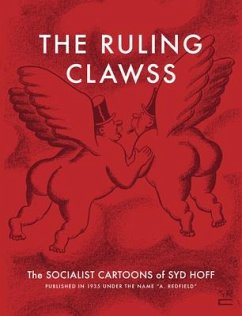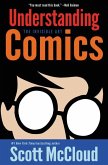Published under the pseudonym A. Redfield by prominent New Yorker contributor Syd Hoff in the 1930s, these mordant and marvellously drawn gag comics skewer the rich and powerful with a pointed pen.
During his career as a New Yorker cartoonist, and before he wrote Danny and the Dinosaur, Syd Hoff wrote under a different name. He was A. Redfield, a cartoonist for the communist newspaper the Daily Worker, and a scourge of the rich and powerful.
Scorning what he saw as the complicity and stale jokes of cartooning peers, Hoff set his sights on the ruling class and revealed them for what they were: hilariously inept, deeply selfish, and incredibly dangerous. Hoff spared nothing from his pen, lampooning police brutality, thin-skinned industrialists, racists, and the looming threat of fascism at home and abroad.
This new edition of The Ruling Clawss includes a new introduction by the historian Philip Nel, who reveals the story behind the rise and disappearance of Hoff s Redfield. The Ruling Clawss cements Hoff as a master of the gag comic, whose work remains powerfully funny and troublingly resonant.
During his career as a New Yorker cartoonist, and before he wrote Danny and the Dinosaur, Syd Hoff wrote under a different name. He was A. Redfield, a cartoonist for the communist newspaper the Daily Worker, and a scourge of the rich and powerful.
Scorning what he saw as the complicity and stale jokes of cartooning peers, Hoff set his sights on the ruling class and revealed them for what they were: hilariously inept, deeply selfish, and incredibly dangerous. Hoff spared nothing from his pen, lampooning police brutality, thin-skinned industrialists, racists, and the looming threat of fascism at home and abroad.
This new edition of The Ruling Clawss includes a new introduction by the historian Philip Nel, who reveals the story behind the rise and disappearance of Hoff s Redfield. The Ruling Clawss cements Hoff as a master of the gag comic, whose work remains powerfully funny and troublingly resonant.
"The work he produced hardly feels its ninety years. If it weren t for the attire in which Hoff s oafish representatives of the ruling class are outfitted tuxedos aplenty, modest gowns for the women and his propensity for drawing the rich as almost uniformly overweight, the illustrations could be of the modern-day United States. After all, our era has much in common with that of 'A. Redfield s': eye-popping inequality, rampant homelessness and police brutality, racism, and the many pompous, moronic captains of industry." Alex N. Press, Jacobin
"[The Ruling Clawss is] the sort of book you wish weren t still so relevant nearly a century after its first publication. A must for Syd Hoff fans and collectors of political cartoons alike." Tom Bowden, The Book Beat
"[The Ruling Clawss] is a fascinating look into the issues of the 1930s through the lens of a communist cartoonist. And they certainly resonate in today's political and economic environment." Ruben Bolling, Boing Boing
The physical dissonance between capital and labor is visualized at every turn: couples whispering about the laziness of the unemployed as they pass beggars; mansion-dwellers bemoaning the meager grandeur of the vaults of opulence they inhabit. . . . The sheer idleness of this class in relation to the workers on whom their wealth relies is one of Hoff s signature moves. Steve Smith, Panels and Prose
Hoff skillfully captures the Depression-era moguls in artfully nuanced slapstick comedy. His images are a history of those times. Steven Heller, PRINT Magazine
[A]round 150 pages of commentary on privilege, capitalist exploitation, racism and social inequality, all perfectly encapsulated in single illustrations so cutting that they deliver their message through easy wit rather than anger. . . Hoff s plea for a more equitable world remains as relevant now as it was in 1935. Andy Oliver, Broken Frontier
"[The Ruling Clawss is] the sort of book you wish weren t still so relevant nearly a century after its first publication. A must for Syd Hoff fans and collectors of political cartoons alike." Tom Bowden, The Book Beat
"[The Ruling Clawss] is a fascinating look into the issues of the 1930s through the lens of a communist cartoonist. And they certainly resonate in today's political and economic environment." Ruben Bolling, Boing Boing
The physical dissonance between capital and labor is visualized at every turn: couples whispering about the laziness of the unemployed as they pass beggars; mansion-dwellers bemoaning the meager grandeur of the vaults of opulence they inhabit. . . . The sheer idleness of this class in relation to the workers on whom their wealth relies is one of Hoff s signature moves. Steve Smith, Panels and Prose
Hoff skillfully captures the Depression-era moguls in artfully nuanced slapstick comedy. His images are a history of those times. Steven Heller, PRINT Magazine
[A]round 150 pages of commentary on privilege, capitalist exploitation, racism and social inequality, all perfectly encapsulated in single illustrations so cutting that they deliver their message through easy wit rather than anger. . . Hoff s plea for a more equitable world remains as relevant now as it was in 1935. Andy Oliver, Broken Frontier








